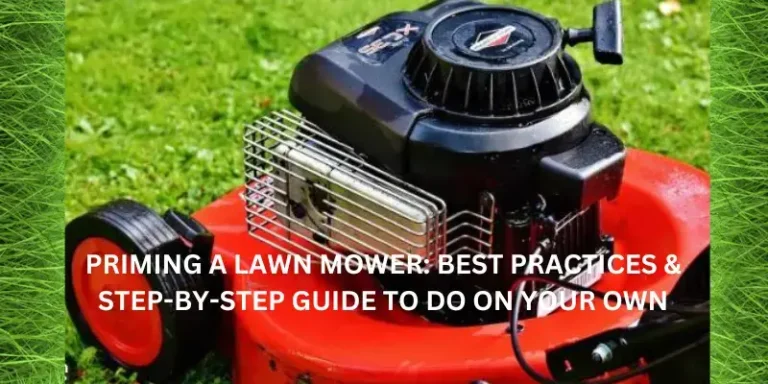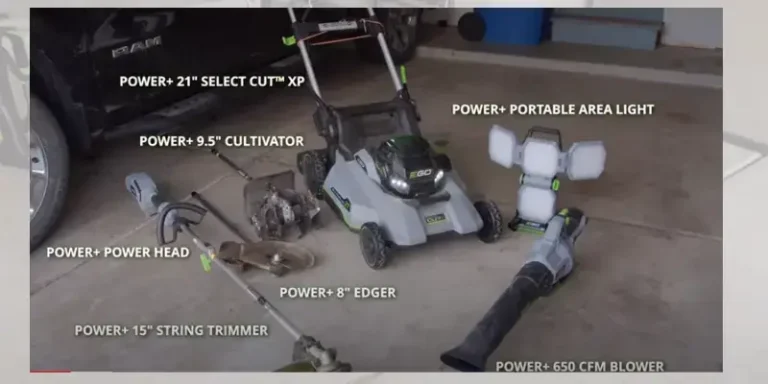How to Do a Lawn Mower Tuneup Yourself – Easy Steps……
Is your lawn mower sputtering and struggling to cut through the grass? A DIY tune-up might be all it needs! Regularly tuning up your lawn mower can improve its performance, make it easier to start, and extend its lifespan. Ensuring your mower is in top shape before the mowing season begins can save you time and frustration later. Always remember to follow safety precautions and consult your owner’s manual for specific instructions.
When to Tune Up a Lawn Mower?
Regular maintenance is important for keeping your lawn mower in peak condition, but how do you know when it’s time for a tune-up? Understanding the optimal timing can prevent unexpected breakdowns and ensure your mower operates efficiently throughout the mowing season. Here are some key indicators and recommended intervals for tuning up your lawn mower:
Annual Tune-Up
The best time to perform a comprehensive tune-up on your lawn mower is before the start of the mowing season, typically in early spring. This ensures that your mower is ready to handle the demands of regular use. An annual tune-up includes tasks like changing the oil, replacing the air filter and spark plug, and sharpening or replacing the blade.
After Extended Storage
If your mower has been sitting unused for several months, especially during winter, it’s essential to give it a thorough tune-up before using it again. Extended storage can lead to issues like stale fuel, which can clog the carburettor, or old oil, which can degrade and harm the engine.
Signs Your Mower Needs a Tune-Up
Pay attention to how your mower is performing. Here are some signs that it might be time for a tune-up:
- Difficulty Starting: If your mower is hard to start or requires multiple attempts, it might need a new spark plug or air filter.
- Poor Cutting Performance: A mower that leaves uneven patches or struggles to cut through grass likely has a dull blade or needs a clean deck.
- Excessive Vibration or Noise: Unusual vibrations or noises can indicate loose parts or engine issues that need attention.
- Increased Fuel Consumption: If your mower is using more fuel than usual, it might be time for an oil change or carburetor adjustment.
Mid-Season Maintenance
For those who frequently use their mower, especially in large yards or challenging conditions, a mid-season tune-up can be beneficial. This doesn’t have to be as comprehensive as your annual tune-up but should include checking and cleaning the air filter, inspecting the blade for sharpness, and topping off or changing the oil if necessary.
After Heavy Use
After particularly heavy use, such as mowing thick or wet grass, it’s wise to inspect your mower for any signs of strain or wear. Clean the deck to prevent grass buildup, check the blade for dullness, and ensure the air filter isn’t clogged.
What You’ll Need For Tuneup?
Before starting your lawn mower tune-up, gather all the necessary tools and replacement parts. Having everything ready ensures a smooth and efficient process. Don’t forget to include safety gear to protect yourself during the tune-up.
Essential Tools
- Wrenches
- Screwdrivers
- Socket set
- Pliers
Replacement Parts
- Spark plug
- Air filter
- Oil filter
Tune-Up Kit
Comprehensive kit with essential tools and replacement parts
Safety Gear
- Gloves
- Safety glasses
Safety First
Safety should always be your top priority when performing a lawn mower tune-up. Ensure the engine is completely cool before beginning any maintenance tasks to avoid burns or injuries. Always disconnect the spark plug wire to prevent accidental starting, and work in a well-ventilated area to manage any fumes or spills safely. By following these precautions, you can complete your tune-up effectively and safely.
Step-by-Step Tune-Up Guide
Preparation
Start by clearing a workspace in a well-ventilated area with a flat surface. This ensures you have enough room to work and can safely manage any fumes or spills. Make sure the engine is completely cool before beginning any maintenance tasks to avoid burns or injuries.
Sharpening or Replacing the Blade
Safety first: Disconnect the spark plug wire to prevent accidental starting. Inspect the blade for nicks, cracks, or dullness. A sharp blade is vital for a clean-cut and healthy lawn. If the blade is only slightly dull, you can sharpen it using a file or grinder. For significant damage, it’s best to replace the blade. Follow the instructions in your owner’s manual for proper removal and installation, paying attention to torque specifications.
Cleaning the Deck
A clean deck improves airflow and prevents grass buildup, enhancing your mower’s efficiency. Use a scraper and wire brush to remove debris from under the deck. Be thorough but gentle to avoid damaging the components. After scraping off the debris, you can use a hose with low pressure to wash away any remaining dirt. Ensure the deck is completely dry before starting the engine to prevent rust and other issues.
Air Filter and Spark Plug Replacement
Locate the air filter and spark plug on your mower. The air filter is typically housed in a small compartment, while the spark plug is usually found on the side of the engine. Remove the old air filter and replace it with a new one. For the spark plug, make sure you choose the correct replacement part for your mower model. Check the spark plug gap and adjust it according to the specifications in your manual.
Oil Change
Using the correct oil type recommended in your owner’s manual is essential for engine health. To change the oil, start by draining the old oil. Make sure to properly dispose of the used oil at a recycling center. Refill the mower with fresh oil, making sure to reach the recommended level without overfilling. Again, refer to your manual for the correct oil capacity.
Final Touches and Storage
Perform a visual inspection of your mower, looking for any loose parts or leaks. Tighten any bolts and fix any issues you find. Start the mower on a level surface in a safe area, and check for proper operation. If everything runs smoothly, your mower is ready for the season. When storing the mower, choose a clean, dry place. For long-term storage, consider winterizing your mower to protect it during the off-season.
Frequently Asked Questions (FAQs)
What is a lawn mower tune-up?
A lawn mower tune-up is a series of maintenance tasks you can perform on your mower to keep it running smoothly, such as changing the oil, replacing the spark plug, and cleaning or sharpening the blade.
Why should I do a DIY lawn mower tune-up?
Doing a DIY lawn mower tune-up can save you money on maintenance costs and help ensure your mower operates efficiently and safely.
What tools do I need to tune up my lawn mower?
You will likely need tools such as a socket wrench, spark plug socket, putty knife, and possibly a clamp or screwdriver, depending on the tasks you plan to perform during the tune-up.
How often should I tune-up my lawn mower?
It is recommended to tune up your lawn mower annually to keep it in good working condition and prolong its lifespan.
What are the steps involved in a DIY lawn mower tune-up?
Typical steps in a DIY lawn mower tune-up include changing the oil, replacing the spark plug, cleaning or sharpening the blade, checking and cleaning the air filter, and inspecting the mower deck for any damage.
How do I change the oil in my lawn mower?
To change the oil in your mower, you will need to locate the oil drain plug, drain the used oil, refill it with fresh oil to the proper level, and dispose of the old oil responsibly by recycling it.
Can I sharpen the lawn mower blade myself during a tune-up?
Yes, you can sharpen the lawn mower blade yourself using a file or grinder to ensure it cuts grass cleanly and efficiently.
Conclusion
Regular tune-ups are vital for keeping your lawn mower in top condition. By following these steps, you can ensure your mower performs optimally and lasts longer. Don’t forget to share your tune-up experiences or ask questions in the comments section!

About Naveed A Hashmi
In my childhood, I used to see my parents while working in the land, for these reasons today I have been serving the same as our own tradition and culture. I thus love to stay in it, because I want to learn something advanced and new so that I may improve my farm’s contour and help others with my experience.







